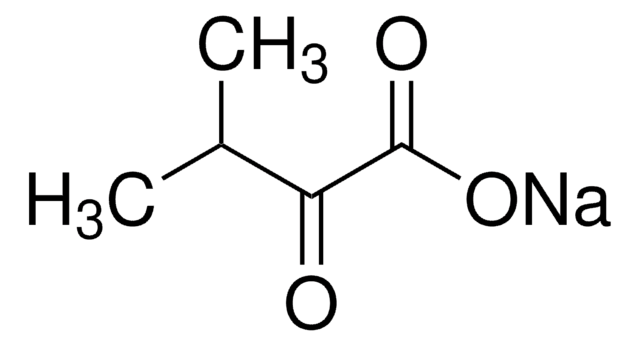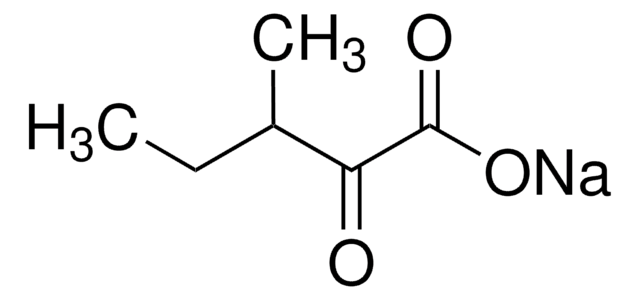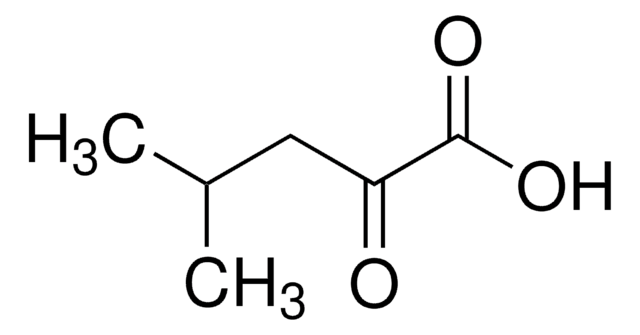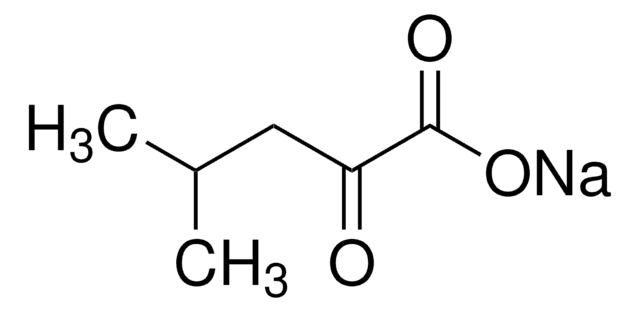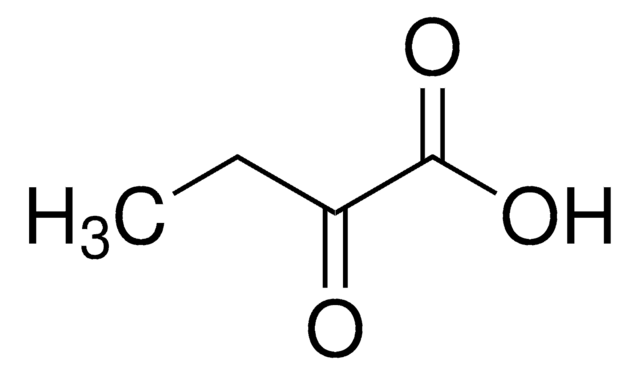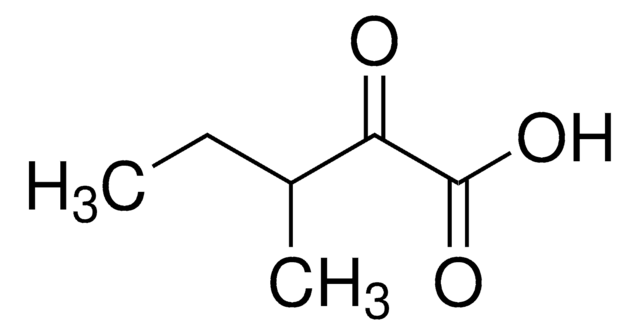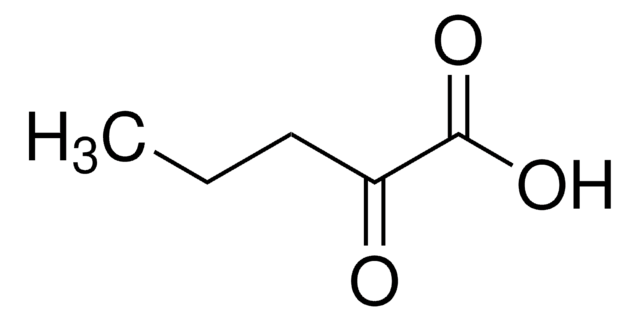Kluczowe dokumenty
K7125
(±)-3-Methyl-2-oxovaleric acid sodium salt
Synonim(y):
(±)-Sodium 3-methyl-2-oxovalerate, 3-Methyl-2-oxopentanoic acid sodium salt, DL-α-Keto-β-methylvaleric acid sodium salt, Ketoisoleucine sodium salt
About This Item
Polecane produkty
typ lipidu
saturated FAs
temp. przechowywania
2-8°C
ciąg SMILES
[Na+].CCC(C)C(=O)C([O-])=O
InChI
1S/C6H10O3.Na/c1-3-4(2)5(7)6(8)9;/h4H,3H2,1-2H3,(H,8,9);/q;+1/p-1
Klucz InChI
SMDJDLCNOXJGKC-UHFFFAOYSA-M
Szukasz podobnych produktów? Odwiedź Przewodnik dotyczący porównywania produktów
Działania biochem./fizjol.
Hasło ostrzegawcze
Warning
Zwroty wskazujące rodzaj zagrożenia
Zwroty wskazujące środki ostrożności
Klasyfikacja zagrożeń
Eye Irrit. 2
Kod klasy składowania
11 - Combustible Solids
Klasa zagrożenia wodnego (WGK)
WGK 3
Temperatura zapłonu (°F)
Not applicable
Temperatura zapłonu (°C)
Not applicable
Środki ochrony indywidualnej
Eyeshields, Gloves, type N95 (US)
Wybierz jedną z najnowszych wersji:
Masz już ten produkt?
Dokumenty związane z niedawno zakupionymi produktami zostały zamieszczone w Bibliotece dokumentów.
Nasz zespół naukowców ma doświadczenie we wszystkich obszarach badań, w tym w naukach przyrodniczych, materiałoznawstwie, syntezie chemicznej, chromatografii, analityce i wielu innych dziedzinach.
Skontaktuj się z zespołem ds. pomocy technicznej